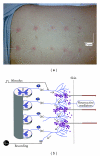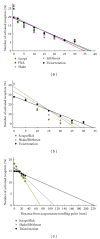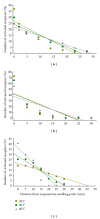Neural acupuncture unit: a new concept for interpreting effects and mechanisms of acupuncture
- PMID: 22474503
- PMCID: PMC3310280
- DOI: 10.1155/2012/429412
Neural acupuncture unit: a new concept for interpreting effects and mechanisms of acupuncture
Abstract
When an acupuncture needle is inserted into a designated point on the body and mechanical or electrical stimulation is delivered, various neural and neuroactive components are activated. The collection of the activated neural and neuroactive components distributed in the skin, muscle, and connective tissues surrounding the inserted needle is defined as a neural acupuncture unit (NAU). The traditionally defined acupoints represent an anatomical landmark system that indicates local sites where NAUs may contain relatively dense and concentrated neural and neuroactive components, upon which acupuncture stimulation would elicit a more efficient therapeutic response. The NAU-based local mechanisms of biochemical and biophysical reactions play an important role in acupuncture-induced analgesia. Different properties of NAUs are associated with different components of needling sensation. There exist several central pathways to convey NAU-induced acupuncture signals, Electroacupuncture (EA) frequency-specific neurochemical effects are related to different peripheral and central pathways transmitting afferent signals from different frequency of NAU stimulation. More widespread and intense neuroimaging responses of brain regions to acupuncture may be a consequence of more efficient NAU stimulation modes. The introduction of the conception of NAU provides a new theoretical approach to interpreting effects and mechanisms of acupuncture in modern biomedical knowledge framework.
Figures






References
-
- Zhao ZQ. Neural mechanism underlying acupuncture analgesia. Progress in Neurobiology. 2008;85(4):355–375. - PubMed
-
- Zhou F, Huang D, Xia Y. Neuroanatomical basis of acupuncture points. In: Xia Y, Wu G, Cao X, et al., editors. Acupuncture Therapy for Neurological Diseases: A Neurobiological View. chapter 2. Beijing, China: Tsinghua University Press; 2010. pp. 32–80.
-
- Ahn AC, Colbert AP, Anderson BJ, et al. Electrical properties of acupuncture points and meridians: a systematic review. Bioelectromagnetics. 2008;29(4):245–256. - PubMed
LinkOut - more resources
Full Text Sources
Other Literature Sources
Medical

